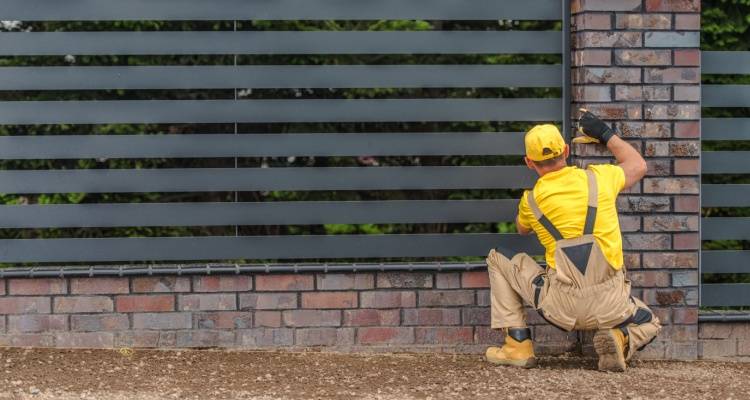Staining Sheds and Fences Cost
- The average cost for staining your shed and fences is around £150
- The job will take approximately 1 - 2 days to complete
- A complete price breakdown on the various cost factors you need to consider
- How long the job should approximately take and what's involved
- How to find and hire someone to stain or paint your shed and fences with MyJobQuote
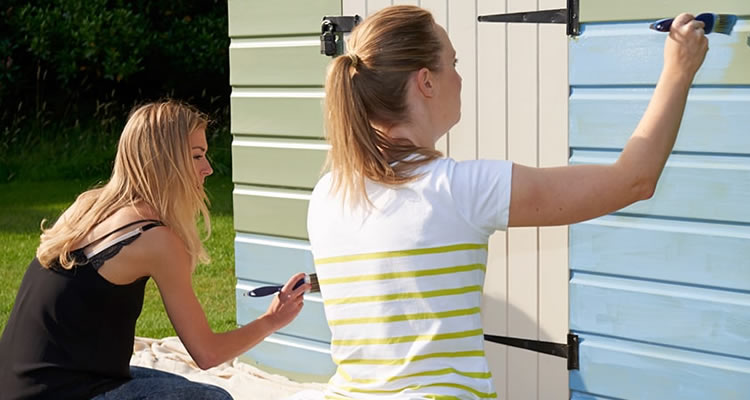
£150
Table of Contents
- How Much is it to Stain Shed and Fences?
- Labour Costs and Timescales
- Supply Costs
- Additional Costs
- Cost Factors of Staining Sheds and Fences
- What's Involved in Staining a Shed or Fence?
- Can I Stain a Shed or Fence Myself?
- Reasons Why You Should Stain a Shed or Fence
- Which Type of Stain Should I Use?
- Paint vs Stain
- How Often Should I Stain my Fence or Shed?
- What Colour Should I Stain my Fence or Shed?
- How Much Wood Stain Do I Need for a Fence?
- Checklist: Hiring Shed Stain Contractors
- FAQs
How Much is it to Stain Shed and Fences?
The cost of staining sheds and fences on average is £150. The price of wood staining does depend on the number of fences and size of shed you want to stain.
Timber is a popular material for garden sheds and fencing, but timber needs regular routine maintenance to keep it looking great and to keep it strong for many years (particularly in the damp and cold UK weather).
By maintaining the wood finish, you can prevent damage and any chance of rotting. With this in mind, wood staining and painting is a very good investment.
Where timber is concerned, moisture is the main enemy. Proper staining will create a barrier that will prevent moisture from penetrating and doing any permanent damage to the wood.
Most experts will recommend staining or painting around every 3-5 years, with regions that are exposed to the elements likely to need to stain or paint their sheds and fences more frequently. If not looked after properly, replacing garden fences or having to build a new shed can become a costly expense.
You can check the fence/shed yourself for beading if the water no longer beads up on the surface, but instead just soaks into the wood, then it is probably time for staining again.
The average cost for staining your shed or fences usually falls between £100-£200. There are a number of factors that can contribute to the cost of your shed or fence staining, including where you live in the UK and the size of your shed or fence.
Should a cedar fence be painted or stained? Thanks for your time.
Fence and Shed Stain Prices
| Job Description | Duration | Material Costs | Labour Costs |
|---|---|---|---|
| Stain small-sized wooden garden fence | 0.5-1 day | £8-£12 | £70-£100 |
| Stain medium-sized wooden garden fence | 1-2 days | £12-17 | £90-£120 |
| Stain large-sized wooden garden fence | 1.5-2.5 days | £18-£22 | £110-£150 |
| Stain small-sized garden shed | 1 day | £8-£12 | £70-£100 |
| Stain medium-sized garden shed | 1-2 days | £12-£16 | £90-£120 |
| Stain large-sized garden shed | 1.5-2.5 days | £14-£18 | £110-£150 |
Labour Costs and Timescales
The labour costs of staining your shed or fence will usually fall somewhere between £70-£150.
The price that you pay for the labour of staining your shed or fence will depend on where you live in the UK and the size of your fence or shed.
People who live in London can expect to pay around £20-£50 more than people in the North of the UK.
The labour costs to stain a small fence in the UK costs around £70-£100 on average whereas the cost to stain a large fence costs on average around £100-£150. As you can see, the size can affect the cost of labour as it will take longer to stain a larger fence.
Similarly, the cost to stain a small shed is on average around £70-£100 and the cost to stain a large fence costs on average around £110-£150.
Supply Costs
The cost of supplies will vary depending on the size of your fence or shed.
The cost of wood stain for a small fence is around £8-£12 whereas the cost for stain to cover a large fence is around £18-£22. Equally, the cost for the amount of wood stain needed to cover a small shed is around £8-£12 whereas the cost for the amount of stain needed to cover a large shed is around £14-£18.
You may also need to purchase a paintbrush for the stain if you are planning to stain your fence or shed yourself. A set of paintbrushes usually falls somewhere around £2-£7 on average.
Additional Costs
You may want to consider some additional costs that may be involved when staining your shed or fence. Below is a list of some extra costs that you may need to think about when it comes to staining your shed or fence.
- House exterior paint - £800-£1500
- House rendering - £3500-£5500
- Artificial grass - £9-£11 per sq. m
- New shed - £200-£800
- Garden Maintenance - £100-£7000
Cost Factors of Staining Sheds and Fences
There are a number of things that can affect the average cost to stain a fence or shed. This can include factors such as your location in the UK, as well as the size of your fence or shed. Below is some information on the ways in which these different elements can affect the overall cost of your fence or shed staining job.
Your Location in the UK
Where you live in the UK can greatly affect the price that you will pay for labour to complete the job of staining your shed or fences. People who live in the London area can expect to pay around £20-£50 more overall than people who reside in the North of the UK.
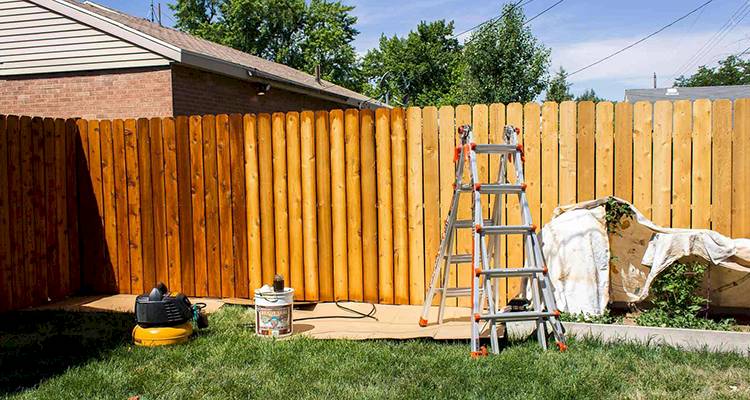
The Size of Your Fence
The size of your fence can affect the overall cost of the job of staining. A larger fence will require more stain and will also take a lot longer to stain, and so, therefore, will end up costing more than a smaller fence.
The Size of Your Shed
The size of your shed can affect the overall cost of the job of staining. A larger shed will require more stain and will also take a lot longer to stain, and so, therefore, will end up costing more than a smaller shed.
What's Involved in Staining a Shed or Fence?
Staining a shed or fence is quite a straightforward process, and both require very similar methods. Below is a guide on what is involved in staining a shed or fence:
Step One – Give Your Shed or Fence a Good Clean
If your shed or fence is brand new, this step can be skipped. However, if your shed or fence has been around for a while and stood the test of time and weather, it will definitely need a good clean first.
Use a mixture of general-purpose cleaner and water and use a hard wire brush to give you fence or shed a good intense scrub down. Be sure to remove all of the present excess debris including cobwebs, mould, mud, or anything else that has gotten stuck to your shed or fence over the years.
Make sure you allow the wood time to completely dry before staining it.
Step Two – Make Your Shed or Fence Watertight
You don’t want to spend time staining your fence or shed only to find it gets ruined by water. Fill in any cracks, gaps, or holes with a wood filler so that you can make sure your fence or shed can withstand any amount of rain that may come.
Be sure to wait for the filler to completely dry before moving onto the next step.
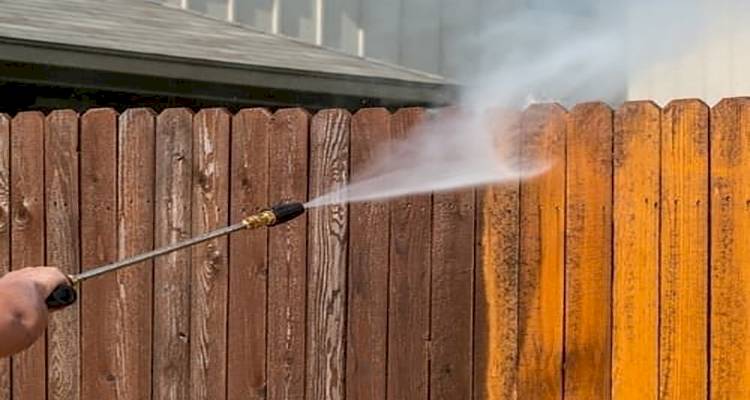
Step Three – Smooth the Surface Down
If you are staining and old shed or fence, you want to ensure that the surface is smooth by removing any chipped or flaky areas. In order to achieve this smooth surface, you will need to sand the wood down.
Wrap some sandpaper around a block and start sanding your fence or shed in the direction of the woodgrain to ensure that you completely cover every single bit of your fence or shed so that the whole surface is completely smooth and ready to be stained.
Step Four – Stain the Wood
If you want your shed or fence to last for a very long time, staining is an essential maintenance element. Staining treatments can help to keep the wood of your shed or fence healthy and can make them last much longer. This is very important in particularly rainy areas of the UK.
Stains usually come in a variety of colours, so you can easily find something that suits your personal tastes and the style of your garden.
Can I Stain a Shed or Fence Myself?
Staining a fence or shed is a pretty straightforward task, whether you have any DIY experience or not. Staining your shed or fence will refresh it while protecting it against all of the natural elements.
The first part of any staining job is to remove any loose material and make sure the wood is clean and dry. If the fence is sturdy enough, you can use a power-washer before you start to get rid of all the dirt and debris, then scrub well on any stubborn stains.
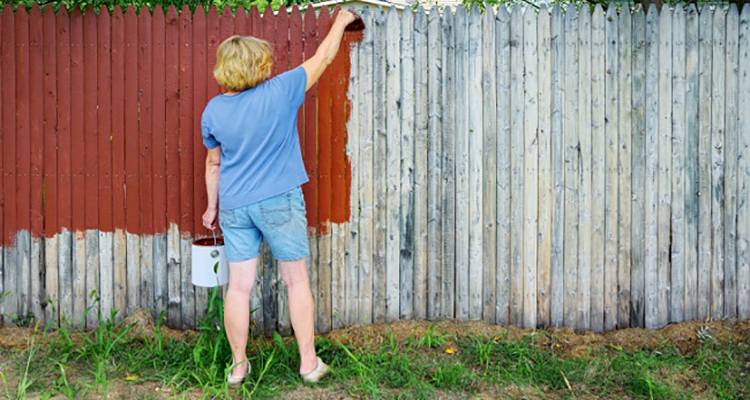
Allow the timber to dry completely before you start the process of staining. You should also move any garden furniture out of the way and cover any nearby plants before you start.
Check the weather forecast before you begin the process of staining - you don’t want to stain during heavy rain, and if it is too cold, then the stain won’t dry either. Try to choose a warm day but wait until the fence is in the shade before you start staining so that the wood is not too hot as this will cause the stain to dry too fast without soaking into the wood properly.
Reasons Why You Should Stain a Shed or Fence
There are a number of reasons why it is a good idea to keep on top of staining your fence and shed. Below is a list of all of those reasons:
It Protects Your Fence or Shed Against Weather
Staining your shed or fence can protect it from the dangers of weather. Weather, particularly rain, can damage the wood on your fence or shed and cause it to become leaky or start to develop things like mould. If you want your fence or shed to last a long time, you should protect them from the damaging effects of weather by staining the wood regularly.
It Gives Your Fence or Shed a Longer Life Span
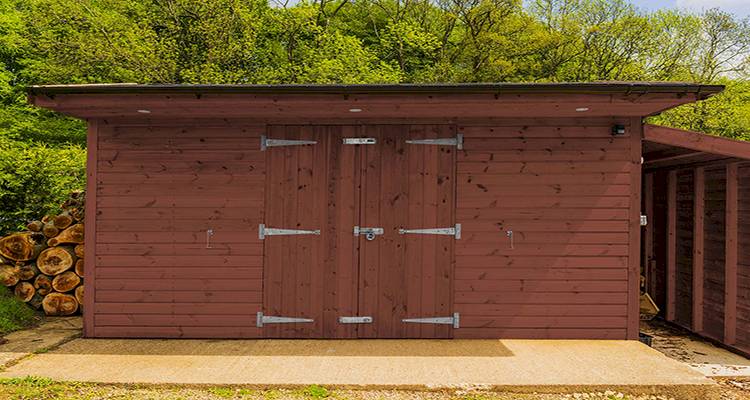
Staining your shed or fence offers protection for the wood. This results in the wood lasting much longer than if you were to leave it without this layer of protection. If you want your shed or fence to have a much longer life span, you should consider re-staining them every 3-5 years.
It Prevents Your Fence or Shed from Rotting
If your shed or fence gets damp, the dampness can soak into the wood which can then cause the wood to start to rot. If you protect the wood on your fence or shed with a staining treatment, you can prevent any wood rotting from occurring.
It Makes Your Fence or Shed More Aesthetically Pleasing
Shed and fence stains come in a variety of different finishes and leave your wood looking great. You can match up your shed and fence stain with the theme of your garden to make it look the most aesthetically pleasing that you possibly can.
Which Type of Stain Should I Use?
There are a number of different types of wood stain available on the market today. Some stains are more general; however, others are designed for specific uses. This is often due to the chemicals that they contain as different chemicals have different results. Below is a list of the different types of wood stains available:
Oil Stains
Oil stains are the most common type of stain. They are usually easy to clean up and have the benefit of drying quite quickly. Varnish stains are very similar, but they don’t need a finish – instead, the mixture itself is its own finishing coat.
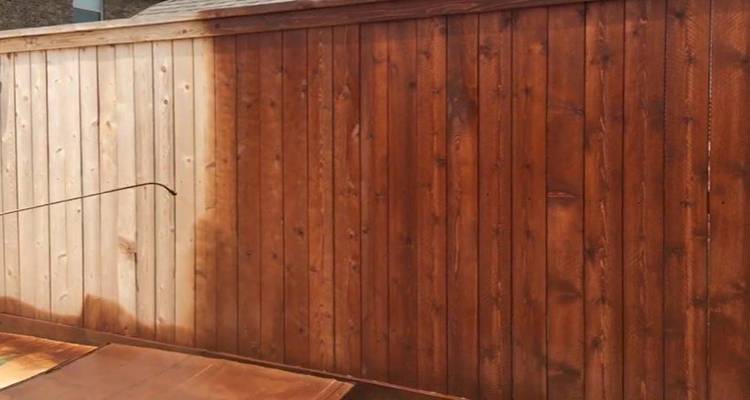
Gel Stains
Gel stains are quite similar to oil stains. However, they are thicker. This can make them harder to apply, but the results tend to be smoother as a finished result. These types of stains tend to be very fast drying, but you don’t have much time to correct any mistakes or problems as you’re limited on time to correct them.
Dye Stains
Ready mixed liquid dye stains are relatively easy to use and can penetrate the wood with vibrant colours. However, over time they are prone to fading in sunlight, so may need to be re-applied more often than other types of stain. It is also possible to purchase dye stains in powder form, where you then simply add water, giving you more control over the colour and thickness of the end result.
Paint vs Stain
You may be wondering if it’s better to paint or stain your sheds and fences. There are arguments for both which you can find below.
What’s Great About Paint
Below is a list of things that are great about paint:
- Shed and fence paint is very easy to apply with a roller or brush and will sit on top of the wood, giving it a great level of protection against weather and anything else nature can throw at it
- There are a lot more colours of fence and garden shed paint available on the market than there are of stains, so it can completely transform your garden
- Paint allows you to customise the design of your fence or shed using your imagination – the possibilities are pretty much endless
- Paint can be applied on top of surfaces that have already been painted or stained. This means you can change the colour of your shed or fence as much and as often as you like
- Litre for litre, paint will cover a much greater surface area than the same amount of stain, especially if the wood you’re painting is highly absorbent
What’s Great About Stain
Below is a list of things that are great about stain:
- Stain is extremely thin and easy to apply using a brush or sprayer
- Unlike paint, stain won’t crack, chip, or peel – it will only fade over time
- Stain is thin enough to allow the wood on your fence or shed to naturally allow moisture to escape, which helps prevent cracking
- Re-staining is much easier than re-painting as there is no need to sand down the wood before applying the new coat
- Stain is most often quite a bit cheaper than paint and is the best option if you’re on a fixed budget. Only one coat is needed, and the need for re-application is much less often than paint. So, with this in mind, stain is a lot more cost-effective than paint
Which One Is Best?
Stain is easy to apply and enhances the natural look of the wood, allowing it to “breathe” while providing moderate protection against moisture and UV damage. However, paint forms a solid protective layer and offers long-term resistance against the elements, weather damage and general wear. Ultimately it's down to personal choice, use stain for a natural appearance and simpler maintenance, or paint for maximum protection and a wider range of colours.
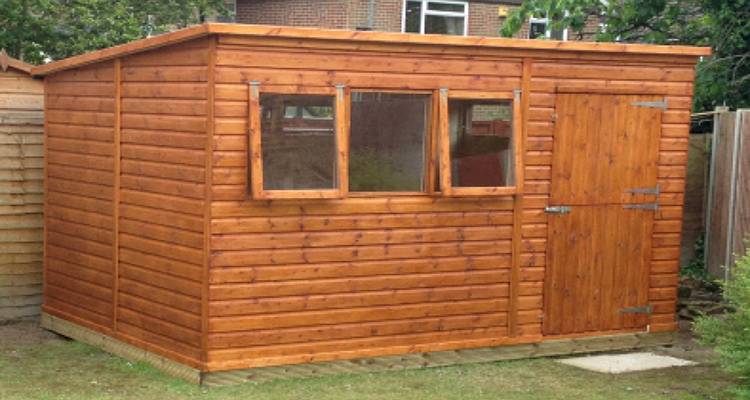
When it comes to which is best, it really depends on personal preference. Each one offers a different aesthetic, and it really depends on the type of aesthetic that you are after for your garden.
How Often Should I Stain my Fence or Shed?
If your fence or shed is looking particularly shabby, or if some of the old paint or stain seems to be coming off, you know that’s a good time to re-paint or stain.
In general, as a good rule of thumb, you should aim to paint or stain your shed every 3-5 years although this can vary depending on the type of wood and local weather conditions. You should also check the instructions on your chosen product, as this will give more information on how to apply and likely give details on longevity expectations.
If you don’t keep on top of painting or staining your shed or fence, it could be prone to be affected by the weather. This could result in your fence or shed becoming mouldy, being prone to rot, or becoming otherwise damaged by weather.
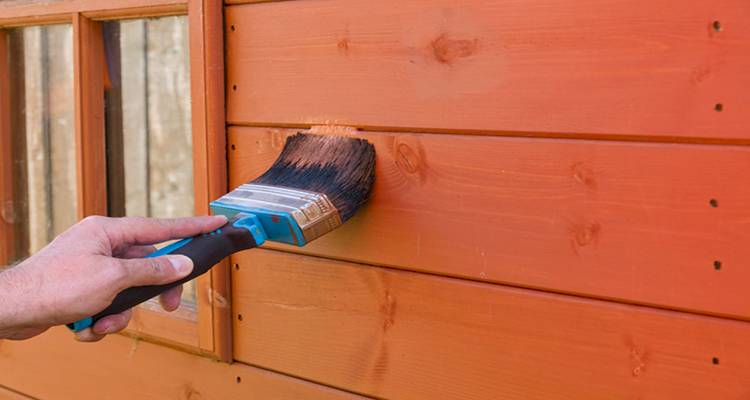
What Colour Should I Stain my Fence or Shed?
The colour that you choose to stain your fence or shed should come down to personal preference. However, there are some things that you may wish to consider when choosing the right colour. Below is a list of things to consider when choosing the colour of your shed or fence stain:
- You should consider coordinating your fence and shed with any light trim colour that exists on your exterior
- Don’t just stain your fence and shed according to the current, trendy colour if it doesn’t match up with your exterior
- You should choose a shed and fence colour that matches your house
- Consider investing in a landscaping design plan to get your shed, fence, and garden looking at their ultimate best
How Much Wood Stain Do I Need for a Fence?
How much stain you need for your fence will depend on how big your fence is, along with the type and quality of wood and the number of coats you are planning to add. The following guide should help you determine an estimate on how much stain you’ll need for your particular fence:
- Small fence (up to 175 sq. ft) – 5 litres of stain
- Medium fence (175-550 sq. ft) – 9 litres of stain
- Large fence (550-700 sq. ft) – 16 litres of stain
Checklist: Hiring Shed Stain Contractors
Below is a list of things that you should consider when looking for a contractor to carry out staining your shed and fences:
- Do they have any required qualifications? Check if the contractor has any relevant training or recognised certifications in painting and decorating, which can indicate they have the right experience for the job.
- Can you see samples of the stains they use? Try to get samples from your contractor so you can choose the right color and check the quality of the product they use.
- Do they offer any guarantees on their work? Ask if the contractor provides a warranty or guarantee to ensure their work is protected in the event of any unforeseen issues once the job has been completed.
- Do they have public liability insurance? This isn’t a legal requirement, but it protects you in case something goes wrong while the contractor is working on your shed or fence and most reputable tradesmen will have suitable insurance.
- Have you requested at least 3 quotes? With the help of MyJobQuote it's recommended to request multiple quotes to compare your options, ask they contain a detailed breakdown of costs so you can ensure you’re paying a fair price and know what's covered.
- Do they have reviews or examples of past work? Ask if the contractor can provide reviews or pictures of other sheds or fences they have stained to see the quality of their work, check their MyJobQuote profile or ask friends and family for any contacts.





